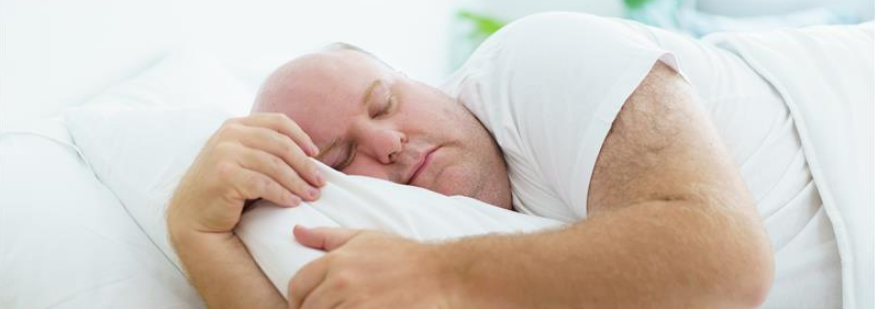Tips and Tricks to Sleep Soundly
Continuous Positive Airway Pressure (CPAP) therapy is widely regarded as the gold standard treatment for sleep apnea, a condition characterized by interrupted breathing during sleep. While CPAP can significantly improve sleep quality and overall health, many people find it challenging to adjust to wearing a mask and breathing pressurized air, especially at first. It's normal to have trouble falling asleep when you start using CPAP, but with patience and a few helpful strategies, you can ease into the therapy and experience its full benefits.
“Adjusting to CPAP therapy can take time and patience, but by making small changes to your routine and sleep environment, you can significantly improve your comfort and experience the full benefits of better, healthier sleep,” says Robert Miller, Apria's Vice President of Sleep Business.
Here are some tips to help you fall asleep more easily and get the most out of your CPAP therapy:
1. Make Your Mask Comfortable
Getting comfortable with your CPAP mask is crucial. Start by wearing your mask during the day while you're awake, allowing yourself to adjust to the sensation without the pressure of falling asleep. Adjust the fit before a mirror to ensure a proper seal without overtightening. Once you have a good fit, try lying down in your usual sleep position to see if further adjustments are needed. Doing this during the day helps you become more comfortable with the mask, making it easier to fall asleep at night.
2. Accessorize for Comfort
Standard bed pillows can sometimes interfere with CPAP masks, causing discomfort. Consider using a CPAP-specific pillow to accommodate the mask and tubing, allowing for a more natural sleeping position. If your mask straps are pulling your hair or causing skin irritation, try using strap or cushion liners. These accessories can make your CPAP experience more comfortable and help you adjust quickly.
3. Ease Into CPAP Use
If you're struggling to get used to your CPAP machine, try easing into its use. Take short naps during the day while wearing your mask, or use it while relaxing and watching TV. This gradual exposure can help you become more familiar with the mask's sensation and the airflow, reducing anxiety and discomfort when it’s time to sleep.
4. Only Go to Bed When You’re Truly Tired
It can be tempting to go to bed early when trying to adjust to something new, but it’s better to wait until you’re genuinely tired. If you go to bed when you’re not ready to sleep, you may find it more difficult to fall asleep with the CPAP. Listen to your body and only head to bed when you’re sleepy; this will make it easier to relax and fall asleep naturally.
5. Develop a Relaxing Bedtime Routine
Winding down with a calming pre-sleep routine can make falling asleep easier, especially when adjusting to CPAP therapy. Consider activities like taking a warm bath, reading a book, or practicing relaxation techniques before bed. Avoid screens and bright lights, as these can interfere with your ability to fall asleep. If you feel tired but are anxious about using CPAP, wait a bit longer before going to bed so you’re more likely to fall asleep quickly.
6. Practice Good Sleep Hygiene
Creating an optimal sleep environment is critical to falling asleep and staying asleep. Keep your room at a comfortable temperature, use blackout curtains to block light, and choose breathable fabrics for your bedding. These changes can improve your sleep quality and help you adjust to CPAP therapy more smoothly.
7. Consider Changing Your Sleeping Position
Your sleeping position can impact the effectiveness of your CPAP therapy. If you’re a back sleeper, the severity of your sleep apnea may increase, requiring higher pressure from your CPAP machine. Switching to a side-sleeping position can reduce the severity of your apnea, allowing your machine to use lower-pressure settings and making it more comfortable and accessible to fall asleep.
8. Use the Ramp Setting on Your Machine
Many CPAP machines have a ramp feature that gradually increases the air pressure to its prescribed level as you fall asleep. This setting can make it more comfortable to start using the machine, as the lower initial pressure can be less overwhelming, helping you drift off more easily.
9. Practice Breathing Techniques
Learning and practicing breathing techniques can help you relax and get used to the CPAP mask and airflow sensation. Techniques such as deep breathing, progressive muscle relaxation, or guided imagery can calm your mind and body, making it easier to fall asleep with the CPAP.
Adjusting to CPAP therapy can be challenging, but with these tips, you can make the transition smoother and more comfortable. Remember that getting used to a new routine takes time, and something as important as CPAP therapy requires some time to adjust. Be patient with yourself, and don’t hesitate to seek support from your healthcare provider or a sleep specialist if you struggle to adjust. You can achieve better sleep and improved health with persistence and the right approach.
References
Mayo Clinic Staff. “CPAP Machines: Tips for Avoiding 10 Common Problems.” Mayo Clinic, March 7, 2024.
“Obstructive Sleep Apnea: Learn More – CPAP Therapy for Sleep Apnea: Dealing with Common Problems.” InformedHealth.org, December 19, 2022.
Cleveland Clinic medical. “Do CPAP Machines Really Work?” Cleveland Clinic, July 12, 2024.
LEGAL DISCLAIMER: Material in this newsletter is provided for general health education and informational purposes and to provide references to other resources only; it may not apply to you as an individual. While Apria Healthcare believes that the information provided through this communication is accurate and reliable, Apria Healthcare cannot and does not make any such guarantee. It is not intended to be a replacement for professional medical advice, evaluation, diagnosis, services or treatment (collectively, “medical treatment”). Please see your healthcare provider for medical treatment related to you and your specific health condition(s). Never disregard medical advice or delay seeking medical care because of something you have read on or accessed through this website. Reading this newsletter should not be construed to mean that you have a healthcare provider/patient relationship.

.jpg?width=1120&height=376&name=AD-EmailBanner-TopSellingComfort_03.19.24%20(4).jpg)



.png)
